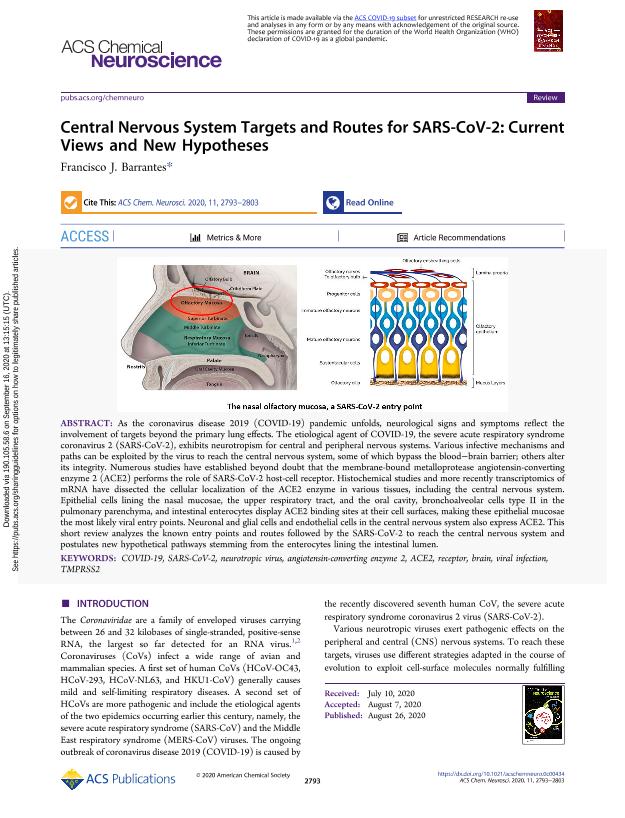Artículo
Central Nervous System Targets and Routes for SARS-CoV-2: Current Views and New Hypotheses
Fecha de publicación:
09/2020
Editorial:
American Chemical Society Inc
Revista:
ACS Chemical Neuroscience
e-ISSN:
1948-7193
Idioma:
Inglés
Tipo de recurso:
Artículo publicado
Clasificación temática:
Resumen
As the coronavirus disease 2019 (COVID-19) pandemic unfolds, neurological signs and symptoms reflect the involvement of targets beyond the primary lung effects. The etiological agent of COVID-19, the severe acute respiratory syndrome coronavirus 2 (SARS-CoV-2), exhibits neurotropism for central and peripheral nervous systems. Various infective mechanisms and paths can be exploited by the virus to reach the central nervous system, some of which bypass the blood-brain barrier; others alter its integrity. Numerous studies have established beyond doubt that the membrane-bound metalloprotease angiotensin-converting enzyme 2 (ACE2) performs the role of SARS-CoV-2 host-cell receptor. Histochemical studies and more recently transcriptomics of mRNA have dissected the cellular localization of the ACE2 enzyme in various tissues, including the central nervous system. Epithelial cells lining the nasal mucosae, the upper respiratory tract, and the oral cavity, bronchoalveolar cells type II in the pulmonary parenchyma, and intestinal enterocytes display ACE2 binding sites at their cell surfaces, making these epithelial mucosae the most likely viral entry points. Neuronal and glial cells and endothelial cells in the central nervous system also express ACE2. This short review analyzes the known entry points and routes followed by the SARS-CoV-2 to reach the central nervous system and postulates new hypothetical pathways stemming from the enterocytes lining the intestinal lumen.
Archivos asociados
Licencia
Identificadores
Colecciones
Articulos(BIOMED)
Articulos de INSTITUTO DE INVESTIGACIONES BIOMEDICAS
Articulos de INSTITUTO DE INVESTIGACIONES BIOMEDICAS
Citación
Barrantes, Francisco Jose; Central Nervous System Targets and Routes for SARS-CoV-2: Current Views and New Hypotheses; American Chemical Society Inc; ACS Chemical Neuroscience; 11; 18; 9-2020; 2793-2803
Compartir
Altmétricas




